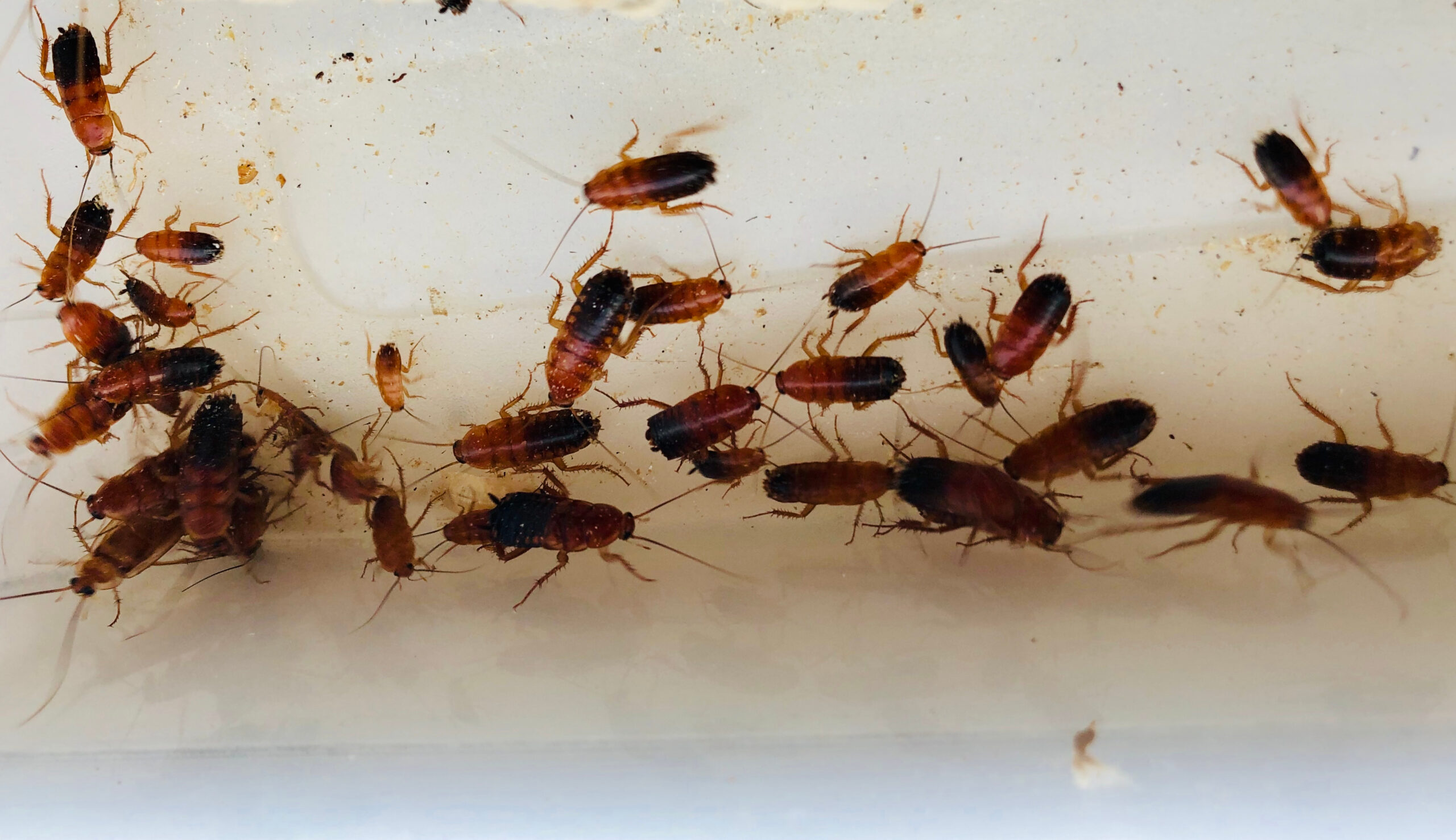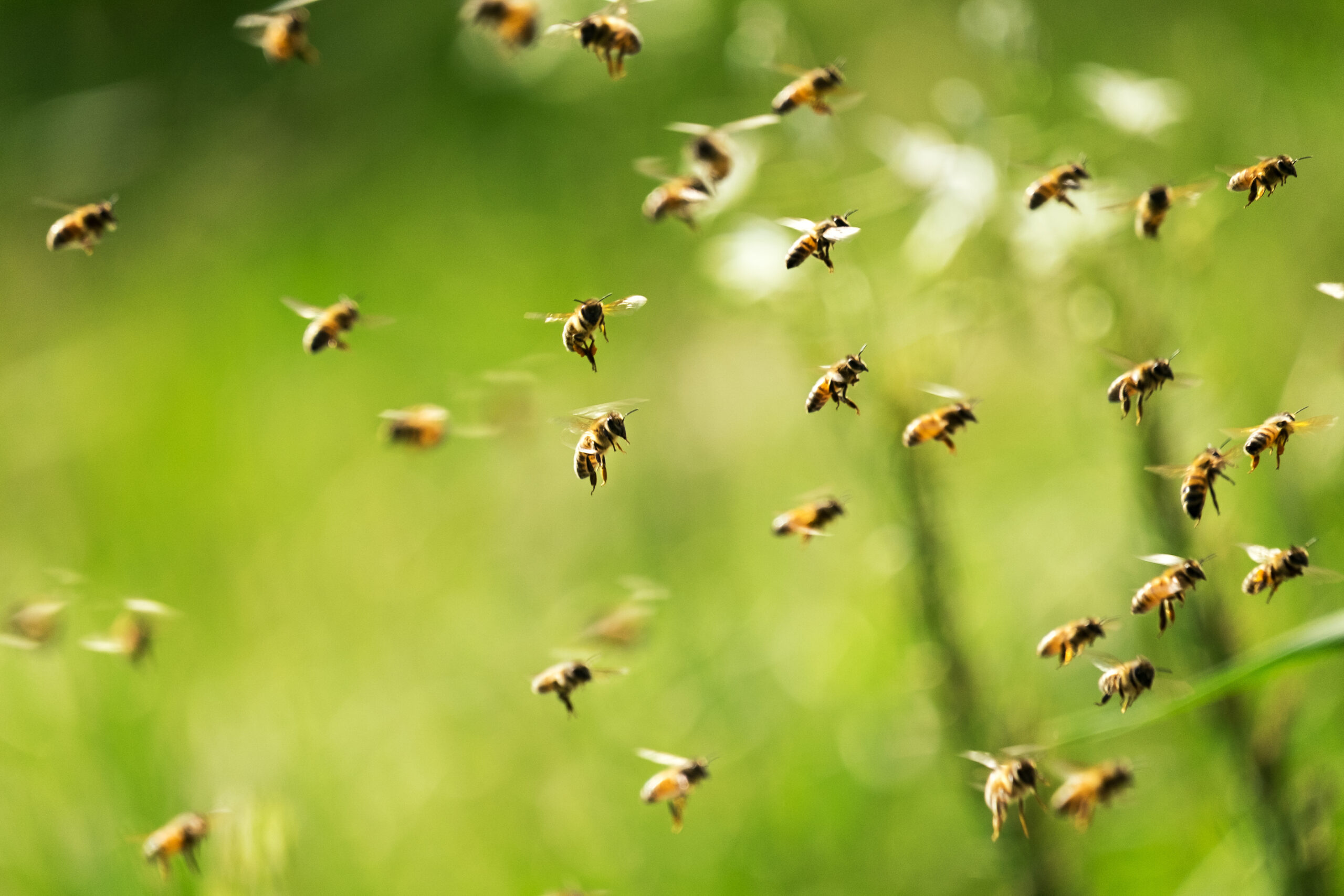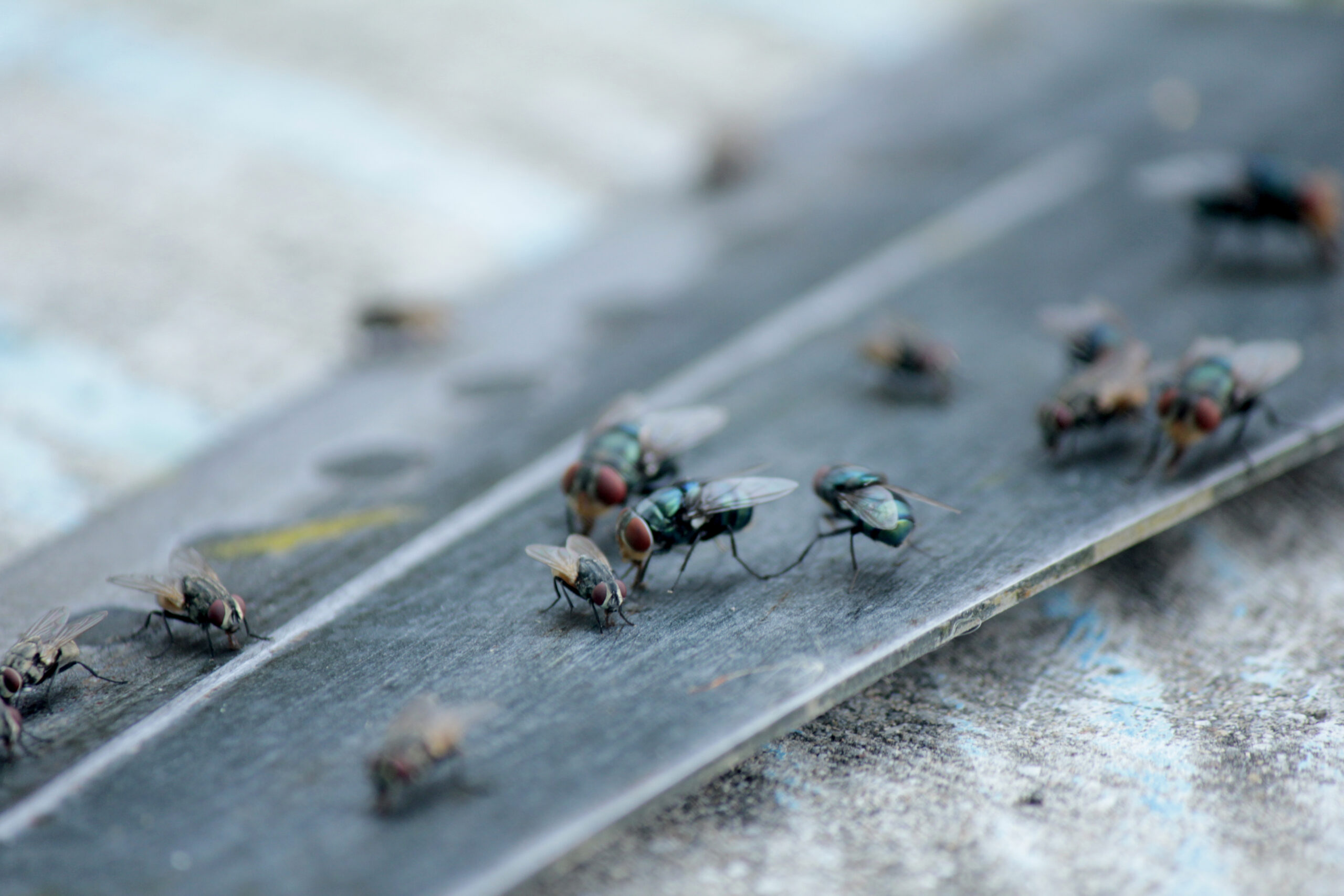Common Pest Tropes in Works of Fiction – Part 2
Common Pest Tropes in Works of Fiction – Part 2
Welcome to part 2 of our mini series on common pest tropes in media! If you missed part 1, you can read it here to catch up on our analysis. Though our discussion is concisely told in two blogs, there is plenty more that we could bring up in regards to these tropes. Since pests are an everyday problem that people from all over the world will face at some point, it makes sense that these creatures have found their way into entertainment. Storytelling as a whole has included insects, rodents, and arachnids for centuries. But the books, movies, and television shows of recent years have found ways to similarly include pests while still adhering to their respective genres and technological advantages.
Roaches

You would be hard-pressed to find multiple positive depictions of cockroaches in media. These are usually done in animation where the actual roach qualities are overlooked and the insect looks like a cute cartoon character, such as the silent Krabby Patty-eating roach in SpongeBob SquarePants. But the majority of the cockroach’s fictional appearances capitalize on their heinous qualities that are already frustrating in real life, thus making cockroaches one of the most consistently villainous species in storytelling.
Sole Survivor: If roaches are known for one thing, it’s the joke that they are the only species that would be able to survive a nuclear apocalypse. There isn’t any evidence to back up this claim, but it is true that roaches can survive circumstances and pesticides that would kill many other insects. They are positively thigmotactic, which means that they can compress their body and organs to squeeze into the tightest of spaces and avoid danger. This must have been the case with the unnamed roach in WALL-E that is the only organic being left on Earth. It seems likable enough to be friends with the titular robot, but the roach does not have enough focus beyond that in order to determine how accurate it is to the real pest.
Sign of Decay: Another main function of roaches in media is to show the audience that the current setting is dilapidated, abandoned, or filthy. Just think of all the animated shows where the characters are in a less-than-ideal place and a single roach scuttles across the floor while they debate running out of the place. In the popular video game Animal Crossing: New Horizons, roaches can actually be found in your playable character’s house! This really only happens when the game hasn’t been played for a while, and they are easy to eliminate by stepping on them. A little ghost-roach will emerge from the actual roach, which is a fun feature that isn’t true to life (as far as we know).
Monsters: While roaches are not appealing in reality, the fictional versions can be more monstrous if the creators make them bigger and badder. They are typically more vengeful, especially against humans, which is the literal version of the classic literary conflict “human vs. nature.” The roach can either be itself or inhabit a different body to give off a more intimidating presence than its typical insect self. The cockroach in Men in Black is technically an alien, but we’re including it because it still looks and moves like a giant roach. As for a roach occupying a different body, an episode of The Powerpuff Girls depicted the heroes fighting the evil Roach Coach, which just turned out to be a talking roach operating a robot human in order to command its roach army.
Stinging Insects

When these insects are in stories, they are either extremely likable or a vengeful force. This primarily depends on two factors: the circumstances and the species. If a character shakes a hive or nest, there’s a good chance that those fictional insects will not be happy campers. But if the insects are left to roam the flowers as they do in reality, they will remain innocent insects. Interestingly enough, the species of insect usually dictates how they are depicted in media. Bees are more likely to be cute and friendly, while wasps and the like are typically more menacing and will chase the characters without much premeditated reasoning.
Sweet Bee: As stated above, bees are often used as the adorable, bumbling insects that make friends with every flower and critter they come across. They can be sweet as honey, as well as selfless and hardworking. This can be the case with both a group of bees and one lone bee, either of which is often found near a garden of flowers. The bees in Bee Movie are the protagonists (clearly), and they are friendly to creatures of all kinds, provided they are not a threat to the insects. A different example is another animated bee, but it’s not from any childhood cartoon or movie. If you think about it, Buzz the Bee from the Honey Nut Cheerios cereal box is one of the friendliest bees ever. He is always smiling and ready to offer an encouraging word to people about the importance of a balanced breakfast that also happens to include lots of honey.
Swarm Chase: This is the vengeful group of insects that has made an appearance in countless cartoons and movies. The swarm that chases a character is always completely synchronized, angry, and dedicated to attacking the perpetrator. It is usually after their home has been disturbed in some way – true to life – which gives the swarm a motive to put their stingers to use. The classic chase is humorously depicted in The Emperor’s New Groove, where Yzma runs back and forth to evade some angry insects while Kronk is distracted by exotic birds. An interactive version of this trope that doesn’t have the pain of real stings is once again in Animal Crossing: New Horizons. If your character shakes a tree that happens to house a wasp nest, the resulting chase will only end if you either enter a building or catch them with a net, which is a skill that definitely takes some practice to properly wield.
Hive Mind: Similar to the swarm chase, this trope is all about teamwork and cohesiveness within the group of insects. The eusocial insects each live in a colony with their own queen and specific pheromones, which allows them to naturally work towards the same goals. This is easily exaggerated in fictional works, especially if there are supernatural or science fiction elements to the story. One example of stinging insects living to fight for their colony is the villainous Swarm in 1981’s Spider-Man and His Amazing Friends. Swarm is a group of synonymous bees in the shape of a man, and he wants to turn every human into his loyal soldier using his superpowers. Though Swarm is one being, he is technically a bunch of bees that all put their minds together to form one brain, making him the definition of a true “hive mind.”
Agitated Army: This trope is essentially branched off from the previous ones, as an army of stinging insects has the elements of both a hive mind and a swarm in pursuit. This specific trope is when the bees or wasps defend their home and colony, usually in some kind of battle against the characters. Some animated works even go so far as to give the insects tiny helmets and angry expressions while they furiously fly towards their target. But a more realistic example is from the classic Little House in the Big Woods, where cousin Charley steps on a yellow jacket nest and ends up with dozens of painful stings in a matter of minutes. These insects attacked him all at once, rather than one at a time, making this army’s element of surprise a force to be reckoned with.
Flies

Flies are typically not their own characters when they appear in books, shows, and movies. In visual media, they are often shown in a cloud of flying black specks over something smelly, like trash or manure. It is usually only in animation that flies are given a voice, and they are typically in the middle of the character spectrum: not very likable but not the worst either. As for their non-speaking roles, flies are almost always the epitome of disgust by entering food that isn’t theirs and congregating above some kind of disgusting matter.
Big Buzz: General buzzing insects are used in most fictional works at least once, since the static noise is an easy way to add some depth to a scene by incorporating the surroundings. In this trope, the buzzing is more than just some white noise in the background; it starts to annoy at least one character who will try anything to get rid of the pesky insect. A Pink Panther episode depicts this in a uniquely humorous way, as per usual for the cartoon. The Panther is so annoyed by the buzzing that he sends it away in the mail, only for it to be returned with a stamp! Another example is an episode of the 2017 Duck Tales, where Donald Duck is persistently followed by a loudly-buzzing mosquito. This one is a little different though, since the frustrating fly turns out to be a spy camera used by the villainous group F.O.W.L.!
Soup of the Day: Believe it or not, the classic “fly in my soup” gag has a known beginning. In the 1920s, Lindy’s Restaurant in New York City inspired this joke in order to have some fun with the notably rude waitstaff. It has since been reimagined and subverted many times, but the common punchline is that the recipient of the contaminated soup is disgusted and often made the butt of the joke. One effective use of this trope is in a classic Sesame Street sketch, where a customer has to repeatedly beg his waiter Grover for a new soup. Grover finally spots the floating fly and tells the customer he should have said “hold the fly” when ordering, which proved useless when Grover later returned with their soup of the day: cream of mosquito!
Evil & Decay: Insects of all kinds are often used as metaphors or warning signs for the characters, and flies are one of the most commonly used species for this. When they are flying around a body or a specific location in a story, the swarm can be anything from evidence to a visual cue to forewarning. The subjectively most famous use of flies as a metaphor is in Lord of the Flies (unsurprisingly), where Simon sees countless black and green flies swarming the pig’s head that the group of antagonistic boys placed on a stake. This pig head is actually deemed the “lord of the flies” because of this; considering the evil connotations with the term, this is a great use of both foreshadowing and the ominous presence that a swarm of flies carries.
From Infestations to Swarms, Pointe Can Handle It All!
Some of these tropes depict pests more positively than others, but that doesn’t mean that real pests are fun guests to have over to the house. There are plenty of possible consequences for a pest invasion: food and drink contamination, potential bacteria transmission, structural damage, and so on. This is why Pointe provides both preventative and responsive services in all seasons! Our team of certified and experienced technicians complete an inspection of the property at the beginning of each service in order to spot all instances of pest activity. We will not leave any pest problem unaddressed, as we know all too well what will happen if pests are left to their own devices. Save the pest antics for the books and screens; contact Pointe Pest Control today for a free quote on the best pest control services around!
***Disclaimer: Section 107 of the United States Copyright Act recognizes “fair use” copywriter content as such: “Notwithstanding the provisions of sections 106 and 106A, the fair use of a copyrighted work, including such use by reproduction in copies or phono-records or by any other means specified by that section, for proposes such as criticism, comment, news reporting, teaching, scholarship, or research, is not an infringement of copyright.” This blog post may contain certain copyrighted works and characters that were not specifically authorized to be used by the copyrighted holder(s), however, the content on this post qualifies as “commentary” on the copyrighted works under the “fair use” doctrine of the U.S. Copyright Act and is thereby protected by federal law. Furthermore, we do not claim any ownership or creative rights of any characters on this list, and all rights outside of the fair use doctrine belong to the respective owner(s).
Citations
Fly in the soup (n.d.). TV Tropes. Retrieved March 24, 2023, from https://tvtropes.org/pmwiki/pmwiki.php/Main/FlyInTheSoup
Golding, W. (1954). Lord of the flies. Penguin Books.
Sesame Street [Sesame Street]. (2008, August 6). Sesame Street: There’s a fly in the soup | waiter Grover [Video]. YouTube. Available at https://www.youtube.com/watch?v=1C8nl8eBoq0 (Accessed on March 24, 2023).
Request a Free Quote Today
(We do not share your data with anybody, and only use it for its intended purpose)


